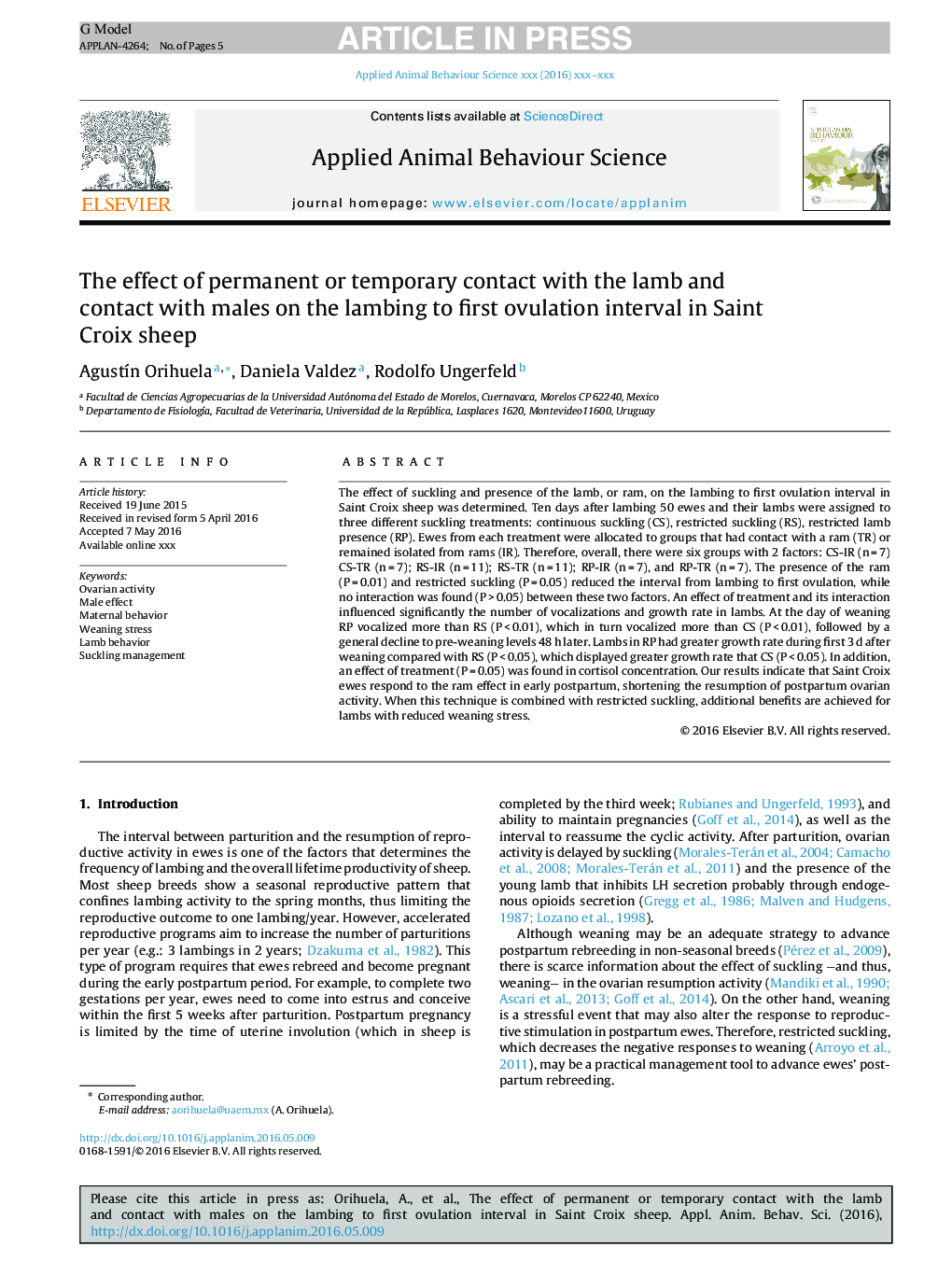| Article ID | Journal | Published Year | Pages | File Type |
|---|---|---|---|---|
| 6379304 | Applied Animal Behaviour Science | 2016 | 5 Pages |
Abstract
The effect of suckling and presence of the lamb, or ram, on the lambing to first ovulation interval in Saint Croix sheep was determined. Ten days after lambing 50 ewes and their lambs were assigned to three different suckling treatments: continuous suckling (CS), restricted suckling (RS), restricted lamb presence (RP). Ewes from each treatment were allocated to groups that had contact with a ram (TR) or remained isolated from rams (IR). Therefore, overall, there were six groups with 2 factors: CS-IR (n = 7) CS-TR (n = 7); RS-IR (n = 11); RS-TR (n = 11); RP-IR (n = 7), and RP-TR (n = 7). The presence of the ram (P = 0.01) and restricted suckling (P = 0.05) reduced the interval from lambing to first ovulation, while no interaction was found (P > 0.05) between these two factors. An effect of treatment and its interaction influenced significantly the number of vocalizations and growth rate in lambs. At the day of weaning RP vocalized more than RS (P < 0.01), which in turn vocalized more than CS (P < 0.01), followed by a general decline to pre-weaning levels 48 h later. Lambs in RP had greater growth rate during first 3 d after weaning compared with RS (P < 0.05), which displayed greater growth rate that CS (P < 0.05). In addition, an effect of treatment (P = 0.05) was found in cortisol concentration. Our results indicate that Saint Croix ewes respond to the ram effect in early postpartum, shortening the resumption of postpartum ovarian activity. When this technique is combined with restricted suckling, additional benefits are achieved for lambs with reduced weaning stress.
Related Topics
Life Sciences
Agricultural and Biological Sciences
Animal Science and Zoology
Authors
AgustÃn Orihuela, Daniela Valdez, Rodolfo Ungerfeld,
